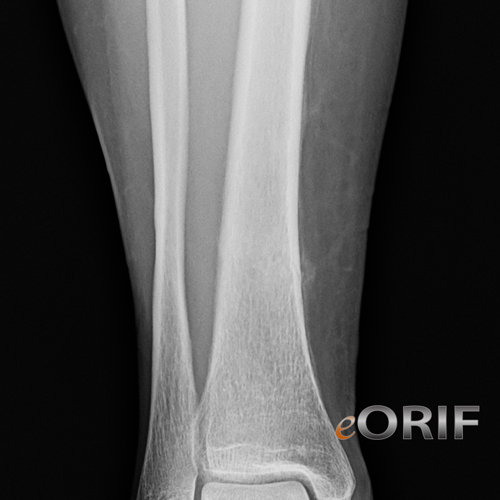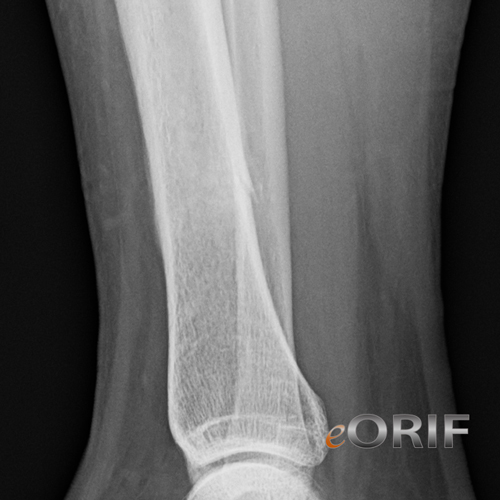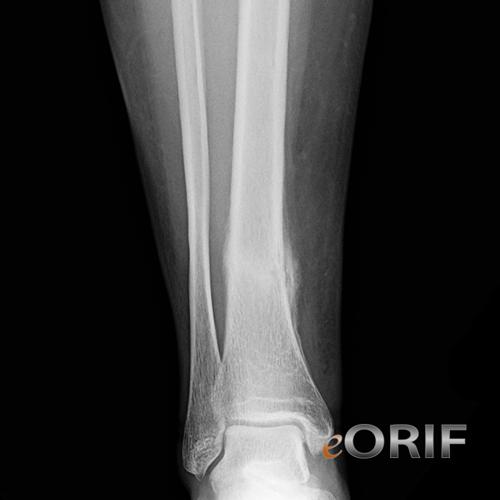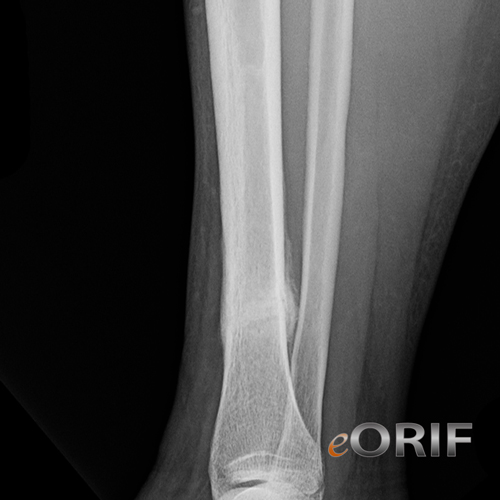|





 
|
synonyms:tibial stress fracture, dreaded black line, tibial shaft stress fracture
Tibial Shaft Stress Fracture ICD-10
Stress Fracture 7th Character Codes
A - initial encounter for fracture
D - subsequent encounter for fracture with routine healing
G - subsequent encounter for fracture with delayed healing
K - subsequent encounter for fracture with nonunion
P - subsequent encounter for fracture with malunion
S - sequela
Tibial Shaft Stress Fracture ICD-9
Tibial Shaft Stress Fracture Etiology / Epidemiology / Natural History
- A 'normal response to abnormal stress' described as a biomechanical failure of bone under repetitive, nonviolent stress. A microfracture occurs which progresses to a stress fracture with continued stress.
- recent increase in running speed, shoe or track error is common.
- Eating disorders and menstrual irregularities have been associated with stress fractures.
- usually describe localized pain which is relieved by rest. Pain continues to occur earlier in the training course with continued exercise.
- point tenderness on the bone, aggravated by percussion.
Tibial Shaft Stress Fracture Anatomy
Tibial Shaft Stress Fracture Clinical Evaluation
- Female patients should be questioned about disordered eating, and menstrual irregularities. (Nattiv A, Clin Sports Med. 1994;13:405).
Tibial Shaft Stress Fracture Xray / Diagnositc Tests
- A/P and Lateral of tibia indicated. Vast majority of stress usually occur on posteromedial cortex (compression side), generally transverse in orientation.
- Xray may be normal
- Look for “V”-shaped defect in anterior cortex on lateral view, referred to as “dreaded black line” indicative of anterior cortex stress Fracture
- Bone Scan: Medial tibial stress syndrome demonstrates diffuse moderate increased activity along posteromedial border of tibia. Stress fractures demonstrate more focal, intense often fusiform reaction. Chronic exertional compartment syndrome has normal bone scan.
Tibial Shaft Stress Fracture Classification / Treatment
- posteromedial cortex Fractures generally respond well to discontinuation of inciting activity.
- anterior cortex of middle 1/3 are predisposed to non-union or delayed union or progression to complete fractures. Trial of rest with or without immobiliation for a minimum of 4-6 weeks. If xrays reveal chronic changes such as a wide fissure, surgical intervention is indicated.
- AOSSM Stress Fracture patient information(link is external)
- Surgery = reamed unlocked IM nail. (Chang PS, Am J Sports Med 1996;24:688-692)
Tibial Shaft Stress Fracture Associated Injuries / Differential Diagnosis
Tibial Shaft Stress Fracture Complications
Tibial Shaft Stress Fracture Follow-up Care
Tibial Shaft Stress Fracture Review References
|







